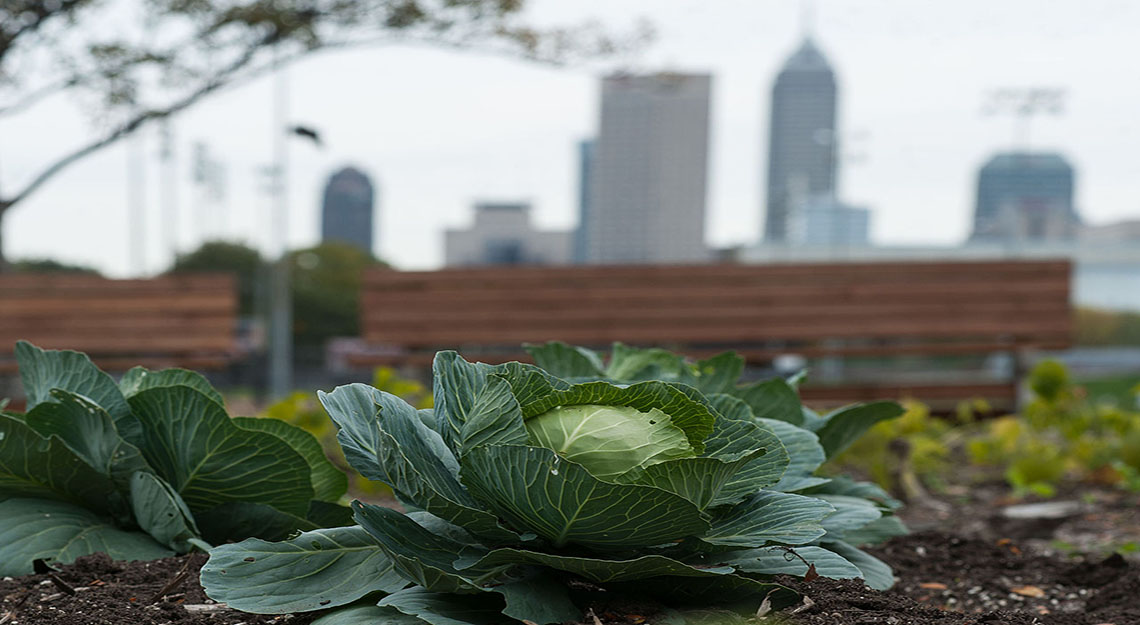Forget the stereotypical portrait of a rural farmer with acres of land: urban farming is already a global force to be reckoned with, and its influence is only growing. Did you know that, according to a 2011 Worldwatch Institute report, about 15 to 20 per cent of the world’s food is currently being grown in urban areas?
Contrary to popular belief, you don’t need a lot of space to grow your own food. Don’t have a yard? Many herbs and vegetables can be grown in large pots on a balcony or large sun-facing windowsill (like tomatoes, beans, peas, radishes, and all kinds of herbs), and most urban neighbourhoods feature community gardens in which residents can harvest on a plot of shared public land.
The benefits of urban farming are manifold: you can save money, improve your health, and decrease your environmental footprint—not to mention enjoying the pleasure and convenience of eliminating treks to the grocery store!
Read on for a few tips on urban farming—and some facts and figures on how exactly it can make your life better.
The health benefits of urban farming
Not only will your homegrown food be free of the pesticides often used on most mass-farmed produce, you’ll also:
• Reap the benefits of physical recreation while you work on your urban garden
• Increase your exposure to sunlight (Vitamin D!) while spending time outdoors
• Improve your dietary knowledge as you research what you grow and how to cook it
• Enjoy the proven mental and spiritual benefits of puttering with plants (believe it or not, plant-human relationships have been proven to “induce relaxation and to reduce stress, fear and anger, blood pressure, and muscle tension.”)

The financial benefits of urban farming
A 1996 study found that every $1 invested in a community garden plot yields about $6 worth of vegetables, and this has no doubt increased as the relative cost of grocery store produce, adjusted for inflation, has skyrocketed over the past couple of decades. Not only is your homegrown produce cheaper to make, it also doesn’t come with the costs associated with transportation, storage, and product loss (all of which are factored in to the price your grocery store charges you).
Shared-space community gardens are often free or very cheap to use, because they operate as non-profit enterprises. They don’t rely on income from sales, they don’t pay any employees, and they often pay very little or nothing in rent as they are usually located on publicly-owned land. Everyone simply chips in with their time and effort to sustain the garden—and community gardeners may even make a few friends along the way.
Want to know exactly how much money you could save? Here’s a practical example: a small 2017 case study by a student at the University of Nebraska Lincoln compared two urban food gardens with three local grocery stores over a period of four months, and found an average savings of $497 USD. That means almost $1500 per year!
Of course, this depends on the size of your garden and the prices at your local grocery store, which can vary widely across neighbourhoods, but this is a useful estimate that should give you an idea of the significant savings to be had.
The global eco-friendly benefits of urban farming
What kinds of environmentally harmful elements can you reduce by engaging in urban farming? The list is long!
• Fossil fuels are burned and carbon is emitted when food travels across long distances to get to your local grocery store. Cut it all out by growing it at home.
• When food travels, it must be packaged (plastic!), processed (preservatives!), and stored (refrigeration!) There’s no need for any of that at home.
• The organic waste produced by your urban farm can be composted to reduce methane emissions from landfills.
• Green spaces help to alleviate trapped pollution in urban areas and naturally cool temperatures. While one urban farm may not have much of an effect, an entire urban farming community can make a significant dent.
• Most synthetic fertilizers (the kind used to grow gorcery store produce) are artificially packed full of nitrogen, a process which requires lots of energy. Using natural fertilizers like coffee grinds, eggshells, and lawn clippings at home will reduce the carbon footprint of your food supply.
Interested? Learn more about the benefits and practical elements of urban farming from local GTA organizations like Toronto Urban Growers and The Stop Community Food Centre.
Happy farming, urbanites!



